 |
Home | Charity | Feedback |
South Korea: Seoul
Seoul, South Korea: Traditional values at heart by Prakash Bang, Editor in Chief 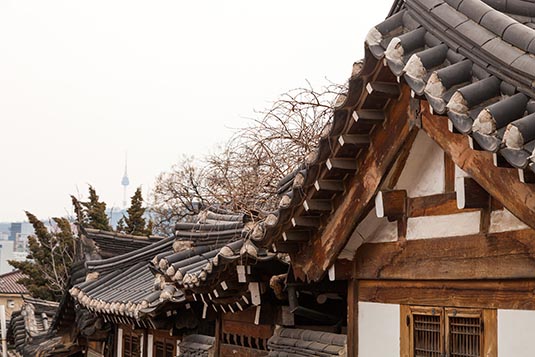 Seoul, the capital of South Korea, is a huge metropolis where modern skyscrapers, high-tech subways and pop culture meet Buddhist temples, palaces and street markets. Seoul is the cultural, economic, and political centre of South Korea. 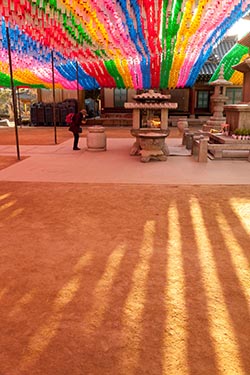 Located at the heart of the Korean Peninsula, Seoul has always been an important strategic point throughout the centuries in terms of defense and the economy, from one kingdom to the next. The three kingdoms of Baekje, Goguryeo, and Silla (BC 57 – AD 688) all fought over the area that is now Korea’s capital. Indeed, whichever kingdom claimed Seoul became the dominant power. The Joseon Dynasty (1392 - 1910) declared Seoul its capital, a role that Seoul has being playing till date.
Located at the heart of the Korean Peninsula, Seoul has always been an important strategic point throughout the centuries in terms of defense and the economy, from one kingdom to the next. The three kingdoms of Baekje, Goguryeo, and Silla (BC 57 – AD 688) all fought over the area that is now Korea’s capital. Indeed, whichever kingdom claimed Seoul became the dominant power. The Joseon Dynasty (1392 - 1910) declared Seoul its capital, a role that Seoul has being playing till date.
I had business in Daegu, an industrial town that stands to be the third largest in South Korea, the first being Seoul and the second being Busan. After concluding business in Daegu, I headed to Seoul to explore this mega and happening metropolis. I had only two and a half days on hand, which of course, wasn't good enough to do justice to the city; but manageable for cherry picking. It was a 4-hour drive by bus from Daegu to Seoul station. The transportation was provided by the organisers of the business meets. Luxury and regular buses run frequently between the two cities. There are many high-speed trains that cover the distance in just 90 minutes. South Korea has very efficient rail network as also excellent highways. 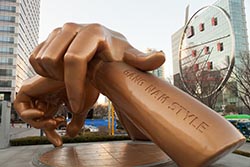 I was booked for the 2 nights at Hotel Novotel in the Gangnam neighbourhood. From Seoul central station I took a cab that charged me Won 16,000. At the time of writing, 1 USD fetched about 1080 Korean won.
I was booked for the 2 nights at Hotel Novotel in the Gangnam neighbourhood. From Seoul central station I took a cab that charged me Won 16,000. At the time of writing, 1 USD fetched about 1080 Korean won.
By the time I got ready it was 4 PM. That evening I would spend exploring Gangnam. To put things in perspective, it may be a good idea to dig a little in history of Seoul. After the formal establishment of Seoul as the capital of the unified Choson state in 1394, construction and growth were very rapid. Construction of various palaces kept on happening from 1392 to 1872. Throughout this period Seoul remained the centre of the “Hermit Kingdom,” with little contact permitted with the outside world. The opening of Korea to diplomatic contacts with the West in 1876, at a time when the weakening Choson dynasty was unable to control Western influence, led in 1905 to the establishment of a Japanese protectorate over the kingdom. 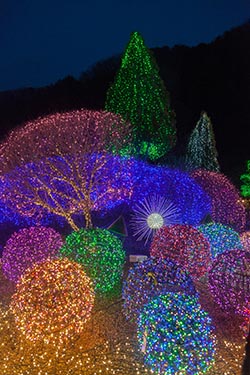 A year after Japan’s annexation of Korea in 1910, the name of the Seoul area was changed to Kyongsong (Gyeongseong), and minor changes were made in its boundaries. Seoul served as the centre of Japanese rule, and modern technology was imported. Roads were paved, old gates and walls partly removed, new Western-style buildings built, and streetcars introduced.
A year after Japan’s annexation of Korea in 1910, the name of the Seoul area was changed to Kyongsong (Gyeongseong), and minor changes were made in its boundaries. Seoul served as the centre of Japanese rule, and modern technology was imported. Roads were paved, old gates and walls partly removed, new Western-style buildings built, and streetcars introduced.
After the end of Japanese control in 1945, the name of the city was officially established as Seoul. The city was left devastated by the Korean War (1950–53), during which the capital was moved temporarily (1951–53) to Pusan (Busan). In 1962 Seoul was placed directly under the control of the prime minister. Out of the postwar rubble rose a modern city of skyscrapers and highways that has become one of the largest metropolises in the world. Until the early 1980s Gangnam and its neighboring areas had remained the least developed in Seoul, but prodigious development over the last 30 years has earned it a reputation of being one of the most affluent, dynamic, and influential areas in both Seoul and South Korea as a whole. 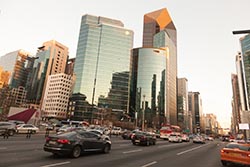 Both the Greater Gangnam Area and Gangnam itself are widely known for its heavily concentrated wealth and very high standard of living, which has been compared to cities such as Beverly Hills in California, USA. Its area accounts for almost 10% of the land value of the entire country!
Both the Greater Gangnam Area and Gangnam itself are widely known for its heavily concentrated wealth and very high standard of living, which has been compared to cities such as Beverly Hills in California, USA. Its area accounts for almost 10% of the land value of the entire country!
My hotel was located on Bongeunsa Street, a busy and main road that goes all the way up from Simonhyeon subway (metro) station to Seoul Coex. The road stretched further, but my plan was to walk up to the Coex junction and turn around. The 30-minute walk took me to Bongeunsa Temple, my first site-seeing stop so to say. 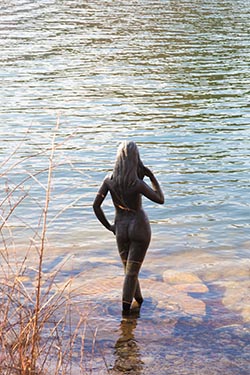 Bongeunsa is a Buddhist temple. It was founded in 794 during the reign of King Wonseong by the monk Yeon-hoe, then the highest ranking monk of Silla, and originally named Kyongseoungsa. During the Joseon Dynasty, Buddhism in Korea was severely suppressed. However, The temple began to be known as Bongeunsa when it was reconstructed in 1498 under the patronage of Queen Jeonghyeon, a Joseon Queen. The term Bongeunsa means the act of honoring the king, which here can be understood as taking the form of praying for king Seongjong's eternal life.
Bongeunsa is a Buddhist temple. It was founded in 794 during the reign of King Wonseong by the monk Yeon-hoe, then the highest ranking monk of Silla, and originally named Kyongseoungsa. During the Joseon Dynasty, Buddhism in Korea was severely suppressed. However, The temple began to be known as Bongeunsa when it was reconstructed in 1498 under the patronage of Queen Jeonghyeon, a Joseon Queen. The term Bongeunsa means the act of honoring the king, which here can be understood as taking the form of praying for king Seongjong's eternal life.
With the support of Queen Munjeong, who revived Buddhism in Korea for a short time in the mid-16th century, it became the main temple of the Korean Seon sect of Buddhism from 1551 through 1936. Monk Bo-wu was appointed head of the temple in 1548 by Queen Munjeong but was killed soon afterwards as the anti-Buddhist factions regained dominance in Korea towards the end of Queen Munjeong's rule. From 1552-1564 it was the center of the Buddhist National Exam. 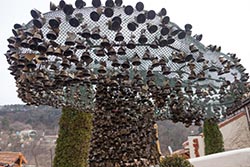 A fire in 1939 destroyed most of the buildings, and other parts of the temple were destroyed during the Korean War. Fortunately, one of the very few halls which escaped destruction during the Korean War continues to hold the woodblock carvings of the Flower Garland Sutra, completed in 1855 by monk Young-ki. The temple has undergone many repairs and renovations, and is now once again a large, thriving complex.
A fire in 1939 destroyed most of the buildings, and other parts of the temple were destroyed during the Korean War. Fortunately, one of the very few halls which escaped destruction during the Korean War continues to hold the woodblock carvings of the Flower Garland Sutra, completed in 1855 by monk Young-ki. The temple has undergone many repairs and renovations, and is now once again a large, thriving complex.
Bongeunsa was made one of the Korean Empire's 14 major temples in 1902. During the Japanese occupation the temple became the headquarters of 80 smaller Buddhist temples around Seoul. In 1922 and 1929, the head monk Cheong-ho saved over 700 people from drowning in the Han River, an act that inspired a monument of recognition. After colonial rule Bongeunsa became subordinate to the Jogye Order, the largest Buddhist sect in Korea. The temple is a notable tourist destination, offering "Temple Stay Program" in which visitors can lead the life of a monk for a few hours. 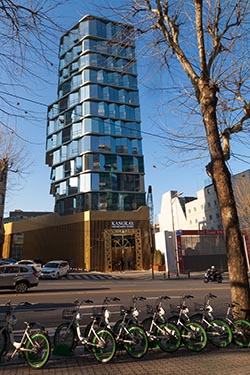 Across the road is the massive Coex complex. Since opening in March of 1979 Coex has provided a global exchange platform where people and businesses come together through exhibitions and conferences. Coex has become a pillar of the Asian MICE market as both Seoul’s greatest exhibition venue and a tourist attraction with infrastructure to service all business needs. It comprises of 4 stories, 4 exhibition halls with state-of-the-art facilities that can house 7,000 people.
Across the road is the massive Coex complex. Since opening in March of 1979 Coex has provided a global exchange platform where people and businesses come together through exhibitions and conferences. Coex has become a pillar of the Asian MICE market as both Seoul’s greatest exhibition venue and a tourist attraction with infrastructure to service all business needs. It comprises of 4 stories, 4 exhibition halls with state-of-the-art facilities that can house 7,000 people.
Apart from business, Coex also offers a gateway to Korean culture. Situated next to Bongeun Temple and connected directly to the Coex Starfield Mall, Coex offers guests the chance to connect to both ancient history and modern pop culture. Propelled by the opening of SMTown@Coex Artium, a juggernaut of Korean pop music, in 2015, and the designation of Gangnam as a Special Tourist Zone dedicated to the MICE industry, Coex has evolved into a center for business and culture alike. The 2012 K-pop song "Gangnam Style" by South Korean entertainer Psy was inspired by, and its music video was shot in, the Gangnam District. The song and video's popularity increased international awareness of the district. In the music video, Psy can be seen dancing at COEX. Psy was born and raised in the district, and later filmed Gentleman in the district as well. A big mural in his honour can be seen at Coex. 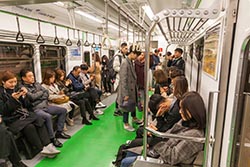 Instead of walking back, I thought it prudent to take a subway from Coex (Samseong station) to Ganganm station, just 3 stops away. Several subway stations in Gangnam and nearby areas were used as filming locations for the 2012 Hollywood film The Bourne Legacy. Of course, many Korean films were shot too.
Instead of walking back, I thought it prudent to take a subway from Coex (Samseong station) to Ganganm station, just 3 stops away. Several subway stations in Gangnam and nearby areas were used as filming locations for the 2012 Hollywood film The Bourne Legacy. Of course, many Korean films were shot too.
The Seoul Metropolitan Subway is a metropolitan railway system consisting of 22 rapid transit, light metro, commuter rail and people mover lines located in northwest South Korea. The system serves most of the Seoul Metropolitan Area including the Incheon metropolis and satellite cities in Gyeonggi province. Some regional lines in the network stretch out to rural areas in northern Chungnam province and western Gangwon province that lie over 100 km away from the capital as well as Suwon. 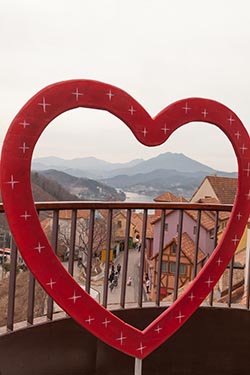 The network consists of numbered lines 1–9, which serve Seoul City proper and its surroundings and named regional railways that serve the greater metropolitan region and beyond. Its first metro line, Line 1, started construction in 1971 and opened in 1974, with through-operation to Korail suburban railways. Today, the network is one of the largest and most efficient urban railway systems in the world, with 331 of track on lines 1–9 alone; wireless and internet service on all trains; and platform screen doors at all stations save for a few.
The network consists of numbered lines 1–9, which serve Seoul City proper and its surroundings and named regional railways that serve the greater metropolitan region and beyond. Its first metro line, Line 1, started construction in 1971 and opened in 1974, with through-operation to Korail suburban railways. Today, the network is one of the largest and most efficient urban railway systems in the world, with 331 of track on lines 1–9 alone; wireless and internet service on all trains; and platform screen doors at all stations save for a few.
The metro is the most important and efficient mode of transport for locals and visitors alike. The start fare in Won 1350. Thereafter, the fare increases as per distance covered. For a single ticket there's a deposit of Won 500 which gets easily refunded at vending counters at all stations. Tourists can purchase day-cards but is available only at Incheon international airport and Seoul central station. I preferred buying single tickets for my commute. Gangnam Station area has been the meeting point of young people for more than 30 years, thanks to its convenient transportation. It is recommended to visit Gangnam Station area in the evenings to feel its young and dynamic atmosphere. 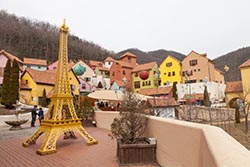 After Psy's hit song 'Gangnam Style' had taken the world by storm, Gangnam Station became a destination for foreign tourists wanting to experience the true 'Gangnam Style.' Gangnam Station is an important center for public transportation and connected to a number of bus lines. It is surrounded by theaters, record stores, bookstores, private academies, restaurants, cafes and other amenities. It has become a popular gathering place with young people. Plus, many tourists often come to give patronage to nearby beauty salons, cosmetic surgery and ophthalmology clinics, as well as spas and massage specialists.
After Psy's hit song 'Gangnam Style' had taken the world by storm, Gangnam Station became a destination for foreign tourists wanting to experience the true 'Gangnam Style.' Gangnam Station is an important center for public transportation and connected to a number of bus lines. It is surrounded by theaters, record stores, bookstores, private academies, restaurants, cafes and other amenities. It has become a popular gathering place with young people. Plus, many tourists often come to give patronage to nearby beauty salons, cosmetic surgery and ophthalmology clinics, as well as spas and massage specialists.
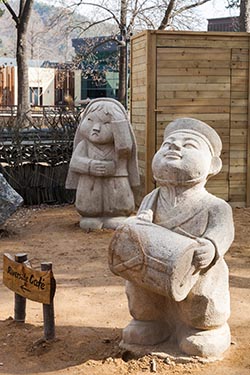 Underground shopping center at Gangnam Station is another good place for shopping. Fashionable goods are lined up with reasonable prices. Gangnam Station Plaza has M-Stage, where various kinds of events are take place, including K-POP concerts. Gangnam-daero, its most happening street, is also known as the 'Street of Light'. Every hour, by the hour a laser show takes place.
Underground shopping center at Gangnam Station is another good place for shopping. Fashionable goods are lined up with reasonable prices. Gangnam Station Plaza has M-Stage, where various kinds of events are take place, including K-POP concerts. Gangnam-daero, its most happening street, is also known as the 'Street of Light'. Every hour, by the hour a laser show takes place.
Dinner that evening was grilled food at one of the many vendor-trucks. Delicious food that's pocket friendly is hallmark of Korea, if I may say so. I walked on the Street of Light from Gangnam Station all the way back to my hotel... and crashed for the night. The next morning, after breakfast, I had booked a private trip out of the town to visit Petite France, Nami Island and the Garden of Morning Calm. I had used the online services of Viator to book the van. It was a full day trip and was originally scheduled to depart at 7:15 AM. Since it was early March, the flowers in the garden were not in bloom, instead the garden was illuminated with millions of LED lights. Thanks to the prudence of the trip organizer, the departure was rescheduled for 10:45 AM so that we could enjoy the garden by the night. That was a indeed a wise decision. 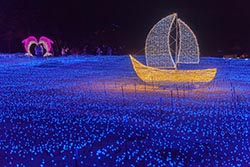 Matt Cho, the driver cum guide for the day was at hotel lobby sharp as scheduled. There were two more guests, young American couple on their honeymoon, to be picked up from a city hotel. All set, we were at the outskirts of Seoul at around noon, driving towards Petite France.
Matt Cho, the driver cum guide for the day was at hotel lobby sharp as scheduled. There were two more guests, young American couple on their honeymoon, to be picked up from a city hotel. All set, we were at the outskirts of Seoul at around noon, driving towards Petite France.
Matt was a fabulous person. Spoke good English, had a nice sense of humour and was very knowledgeable. What foxed me was his understanding of the complex Indian caste system and the Hindu mythology. That should sum it up. It was a day well spent chatting with him all along. 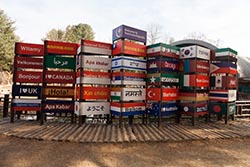 A 90-minute drive got us to Petite France. It's a French cultural village set in the Korean countryside! Petite France serves as both a French cultural village and a youth training facility (Goseong Youth Training Center), and consists of 16 French-style buildings where visitors can lodge and experience French food, clothing, and household culture.
A 90-minute drive got us to Petite France. It's a French cultural village set in the Korean countryside! Petite France serves as both a French cultural village and a youth training facility (Goseong Youth Training Center), and consists of 16 French-style buildings where visitors can lodge and experience French food, clothing, and household culture.
The concept of Petite France encapsulates ‘flowers, stars, and the Little Prince.’ The village contains a memorial hall dedicated to Saint-Exupery, the author of the celebrated French novel, Le Petit Prince (1943) and as such it is called the Little Prince theme park. It also has a gallery displaying sculptures and paintings of le coq gaulois (the Gallic rooster), the national symbol of France; Orgel House where a 200-year-old music box plays a sweet melody; a shop that sells herbal and aromatic products; a souvenir shop; and many other locales where you can experience French culture. 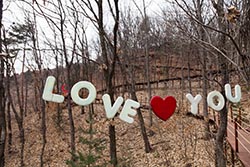 The village can accommodate up to 200 visitors with 34 guest rooms that hold four to ten people each. And is a popular weekend stop for corporate world to train and entertain their employees. For tourists like us, its a few hours of time well spent. Matt allowed us 90 minutes to explore the 'village'. We then moved towards Nami Island, a further 20-minute drive.
The village can accommodate up to 200 visitors with 34 guest rooms that hold four to ten people each. And is a popular weekend stop for corporate world to train and entertain their employees. For tourists like us, its a few hours of time well spent. Matt allowed us 90 minutes to explore the 'village'. We then moved towards Nami Island, a further 20-minute drive.
Namiseom or Nami Island is a tiny half-moon shaped island formed as it was inundated by the rising water of the North Han River as the result of the construction of Cheongpyeong Dam in 1944. Its name originated from General Nami who died at the age of 28 after being falsely accused of treason during the reign of King Sejo, the seventh king of the Joseon Dynasty of Korea. Although his grave was not discovered, there were a pile of stones where his body was supposed to be buried. It was believed that if someone took even one stone from there, it would bring misfortune to their house. A tour company arranged the grave with soil and then developed Namiseom into an amusement park that it is today. 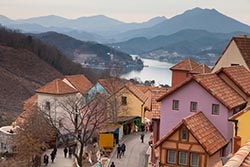 Ferry boats continuously ply from the mainland to the island. It's a 10-minute ride. Those interested can also take the zip-line! The mainland has parking lots and scores of restaurants - mostly offering Korean cuisine. Lunch was included in our package. Matt suggested a restaurant where we enjoyed a delicious Korean BBQ lunch and walked to the ferry wharf. On the island, Matt left us alone and gave us time util 6 PM to be back at the parking space.
Ferry boats continuously ply from the mainland to the island. It's a 10-minute ride. Those interested can also take the zip-line! The mainland has parking lots and scores of restaurants - mostly offering Korean cuisine. Lunch was included in our package. Matt suggested a restaurant where we enjoyed a delicious Korean BBQ lunch and walked to the ferry wharf. On the island, Matt left us alone and gave us time util 6 PM to be back at the parking space.
Naminara (meaning, "Nami Country") is a micronation, and the "visa" (we call it ticket!) issued by Naminara is required in order to enter Namiseom. It declared itself a self-governing country in 2006 as acceding to General Nami's natural greatness of soul and appointed Ryu Hongjun as the 1st head of culture and Suzanna Samstag Oh as a foreign head. In addition, it has invented its own passport, currency, stamp and telephone card! 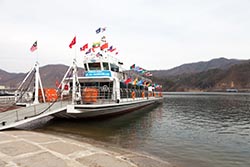 A special feature of Namiseom Island is that there are no telephone poles. This is because all electric wires were built underground to keep the natural feeling of the landscape. The island is 553,560 square yards with chestnut trees and poplar trees throughout.
A special feature of Namiseom Island is that there are no telephone poles. This is because all electric wires were built underground to keep the natural feeling of the landscape. The island is 553,560 square yards with chestnut trees and poplar trees throughout.
In the middle of the isle, there is a grass field about 316,320 square yards. It features education and training facilities and camping sites. The island also has a swimming pool and water-sports facilities for motorboats and water skiing, as well as a theme park with a merry-go-round, shooting range, and roller skating rink. Lodging facilities such as resort villas and bungalows are available for visitors to stay on the island. 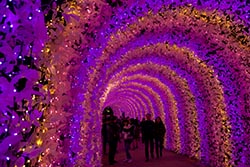 It was refreshing to walk for a couple of hours on the island. A cup of hot coffee did me well. At 6, we commenced our drive to the Garden of Morning Calm, about midway between Nami and Seoul.
It was refreshing to walk for a couple of hours on the island. A cup of hot coffee did me well. At 6, we commenced our drive to the Garden of Morning Calm, about midway between Nami and Seoul.
The Garden of Morning Calm, a 30,000 sq.mt. garden, is open year-round and is a great spot to visit for families, couples, and photographers alike. The garden was conceptualized by Professor Han Sang-kyung (Gardening Department, Sahmyook University) while he was serving as an exchange professor in America. His vision was to create a garden that would become world-famous and spread the concept of Korean beauty throughout the world. The inspiration for the garden stemmed from a poem written by Sir Rabindranath Tagore, a great Indian poet, who described Korea during the Joseon Dynasty as "The Land of the Morning Calm." 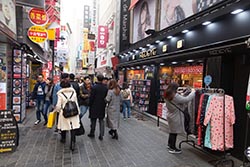 The garden is the oldest private garden in Korea. It is an artistic space with a beautiful balance between the Korean concept of natural curves with asymmetry, and plants with synthetic materials, attracting about 600,000 visitors annually.
The garden is the oldest private garden in Korea. It is an artistic space with a beautiful balance between the Korean concept of natural curves with asymmetry, and plants with synthetic materials, attracting about 600,000 visitors annually.
Scenic walkways, beautifully manicured grass, and flower beds connect the garden's 20 different themed sections. The Sunken Garden is shaped like the Korean Peninsula and is carpeted with beautiful flowers on both sides representing the desire for South and North Korea to be reunited. It is easily one of the most popular and meaningful attractions at the garden. 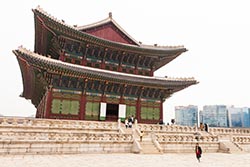 The garden houses about 5,000 kinds of plants, including 300 varieties native to Baekdusan Mountain, known as a spiritual mountain to the Korean people. Flowers are in bloom from March to November, so the garden is usually busy during this period. In addition to the beautiful foliage of the garden, there are a variety of festivals and displays held throughout the year, namely:
The garden houses about 5,000 kinds of plants, including 300 varieties native to Baekdusan Mountain, known as a spiritual mountain to the Korean people. Flowers are in bloom from March to November, so the garden is usually busy during this period. In addition to the beautiful foliage of the garden, there are a variety of festivals and displays held throughout the year, namely:
Spring: Spring Garden Festival Summer: Festival of Roses, Hydrangeas and Roses of Sharon Autumn: Festival of Chrysanthemums and Autumnal Tints Winter: Lighting Festival 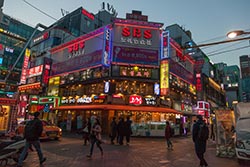 I had the opportunity to spend about 2 hours, immersed in the Festival of Lights.
I had the opportunity to spend about 2 hours, immersed in the Festival of Lights.
At 8 PM, we commenced our return journey. At 10:30, I was fast asleep in the cozy comforts of my room. The whole of next day would be exploring Seoul's 'other side of the river'. My flight back home was scheduled at 11 PM the next day. I had booked a cab to take me to Incheon international airport at 7 PM. It made sense to check-out after breakfast and leave the bags at the concierge. At around 10:30 AM I was at Simonhyeon subway station. My destination was Gyeongbokgung station. Took me about 40 minutes with a change at Express Bus Terminal station. The metro map looks pretty complex, especially for non-Koreans; but is easy to move around once you get a hang of it. Purchasing tickets at vending machines could be little tricky, but then people around are always eager to help! 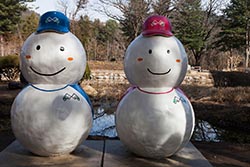 My first stop for the day was Gyeongbokgung Palace aka Gyeongbok Palace. It was the main royal palace of the Joseon dynasty. Built in 1395, it is the largest of the Five Grand Palaces built by the Joseon dynasty. Gyeongbokgung served as the home of Kings of the Joseon dynasty, the Kings' households, as well as the government of Joseon.
My first stop for the day was Gyeongbokgung Palace aka Gyeongbok Palace. It was the main royal palace of the Joseon dynasty. Built in 1395, it is the largest of the Five Grand Palaces built by the Joseon dynasty. Gyeongbokgung served as the home of Kings of the Joseon dynasty, the Kings' households, as well as the government of Joseon.
Gyeongbokgung continued to serve as the main palace of the Joseon dynasty until the premises were destroyed by fire during the Imjin War (1592–1598) and abandoned for two centuries. However, in the 19th century, all of the palace's 7,700 rooms were later restored under the leadership of Prince Regent Heungseon during the reign of King Gojong. Some 500 buildings were restored on a site of over 40 hectares. The architectural principles of ancient Korea were incorporated into the tradition and appearance of the Joseon royal court. 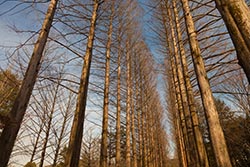 In the early 20th century, much of the palace was systematically destroyed by Imperial Japan. Since then, the walled palace complex is gradually being restored to its original form. Today, the palace is arguably regarded as being the most beautiful and grandest of all five palaces. It also houses the National Palace Museum of Korea and the National Folk Museum within the premises of the complex.
In the early 20th century, much of the palace was systematically destroyed by Imperial Japan. Since then, the walled palace complex is gradually being restored to its original form. Today, the palace is arguably regarded as being the most beautiful and grandest of all five palaces. It also houses the National Palace Museum of Korea and the National Folk Museum within the premises of the complex.
It was a Sunday and the palace grounds were almost flooded with locals. Looks like it’s a done thing to dress up in traditional Korean dresses and get pictured at countless palace backdrops. Shops around the palace specialize in hiring Korean dresses for men and women; locals or otherwise. Some pretty Korean girls were kind enough to pose for me. 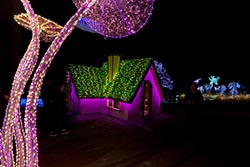 One could spend hours in the palace. Since I was on a schedule, I gave myself about 90 minutes. On my way out, I was lucky to witness the change of Royal Guards.
One could spend hours in the palace. Since I was on a schedule, I gave myself about 90 minutes. On my way out, I was lucky to witness the change of Royal Guards.
Exiting from the main Gwanghawamun Gate, I walked for about 30-minutes, some of it uphill, to reach the very famous Bukchon Hanok Village. Encompassed by Gyeongbokgung Palace, Changdeokgung Palace and Jongmyo Shrine, Bukchon Hanok Village is home to hundreds of hanoks, traditional Korean houses that date back to the Joseon Dynasty. Today, many of these operate as cultural centers, guesthouses, restaurants and tea houses, providing visitors with an opportunity to experience, learn and immerse themselves in traditional Korean culture. 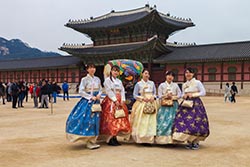 The name Bukchon literally translates as “northern village,” and was given to the district because it lies north of two significant Seoul landmarks- the Cheonggyecheon Stream and the Jongno area.
The name Bukchon literally translates as “northern village,” and was given to the district because it lies north of two significant Seoul landmarks- the Cheonggyecheon Stream and the Jongno area.
According to Confucian beliefs and pungsu, or geomantic principles, Bukchon is auspiciously located. Nestled at the southern foot of the mountain connecting Baegak and Eungbongsan Mountains, it is surrounded by lush forests and offers beautiful views. Consisting of the Wonseo-dong, Jae-dong, Gye-dong, Gahoe-dong and Insa-dong neighborhoods, Bukchon is rooted in some 600 years of history, dating back to the Joseon era (1392–1897). 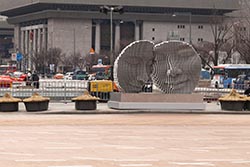 Due to its close proximity to the city’s two primary palaces, it was originally inhabited by high-ranking government officials and their families. Nobility lived in hanok, traditional homes that were built in a specific architectural style, designed to maintain balance with the surrounding topography and were generally constructed using elements such as long, curved roofs and ondol flooring that helped keep the homes warm in the winter.
Due to its close proximity to the city’s two primary palaces, it was originally inhabited by high-ranking government officials and their families. Nobility lived in hanok, traditional homes that were built in a specific architectural style, designed to maintain balance with the surrounding topography and were generally constructed using elements such as long, curved roofs and ondol flooring that helped keep the homes warm in the winter.
Due to popularity of the village, tourists throng the neighbourhood, sometimes creating a nuisance for the residents. It was common to see volunteers with signs asking tourists to be silent and mindful. I sure can appreciate that. 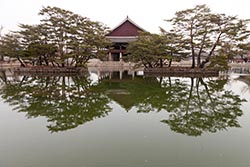 I then walked downhill to Anguk station and took a train to Myeongdong, my final stop of the trip.
I then walked downhill to Anguk station and took a train to Myeongdong, my final stop of the trip.
Myeongdong is one of Seoul's main shopping districts featuring mid-to-high priced retail stores and international brand outlets, including Lacoste, Polo Ralph Lauren, H&M, Zara, Forever 21, Bulgari and Louis Vuitton, as well as Korean cosmetics brands such as Nature Republic, Missha, The Face Shop and Skin Food. It is a particularly popular area for young people and tourists as a center for fashion and sight-seeing. Several large shopping centers and department stores are in the district including Lotte Department Store, Shinsegae Department Store, Migliore, M Plaza, and Noon Square. 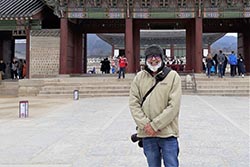 Myeongdong dates back to the Joseon Dynasty when it was called Myeongryebang and mostly a residential area. During the Japanese era the name was changed to Myeongchijeong and became more of a commercial district, being influenced by the rising commerce in the neighboring Chungmuro area. It became the official district of Myeongdong in 1946, after independence. After the Korean War and into the 1960s, the economy blossomed and the financial sector from Namdaemun-ro and Euljiro gradually expanded into Myeongdong.
Myeongdong dates back to the Joseon Dynasty when it was called Myeongryebang and mostly a residential area. During the Japanese era the name was changed to Myeongchijeong and became more of a commercial district, being influenced by the rising commerce in the neighboring Chungmuro area. It became the official district of Myeongdong in 1946, after independence. After the Korean War and into the 1960s, the economy blossomed and the financial sector from Namdaemun-ro and Euljiro gradually expanded into Myeongdong.
Casual eateries offer Korean dumplings and ginseng chicken soup, while street vendors sell Japanese and Thai snacks. Shows mixing folk music and drama are staged at Myeongdong Nanta Theatre. Nearby 19th-century Myeong-dong Cathedral features a Gothic-style bell tower. Myeongdong was listed as the ninth most expensive shopping street in the world. That did not matter to me much, as shopping is not my forte. What mattered was to take the metro back to my hotel. The staff was kind enough to allow me to use their fitness area to shower and change... ready to take my flight back home. Seoul Image Gallery  Photo viewer Photo viewer
|
|
|
Home |
Charity |
Feedback
Privacy Policy | Terms of Usage © YoGoYo.com. All rights reserved. |

















































































































